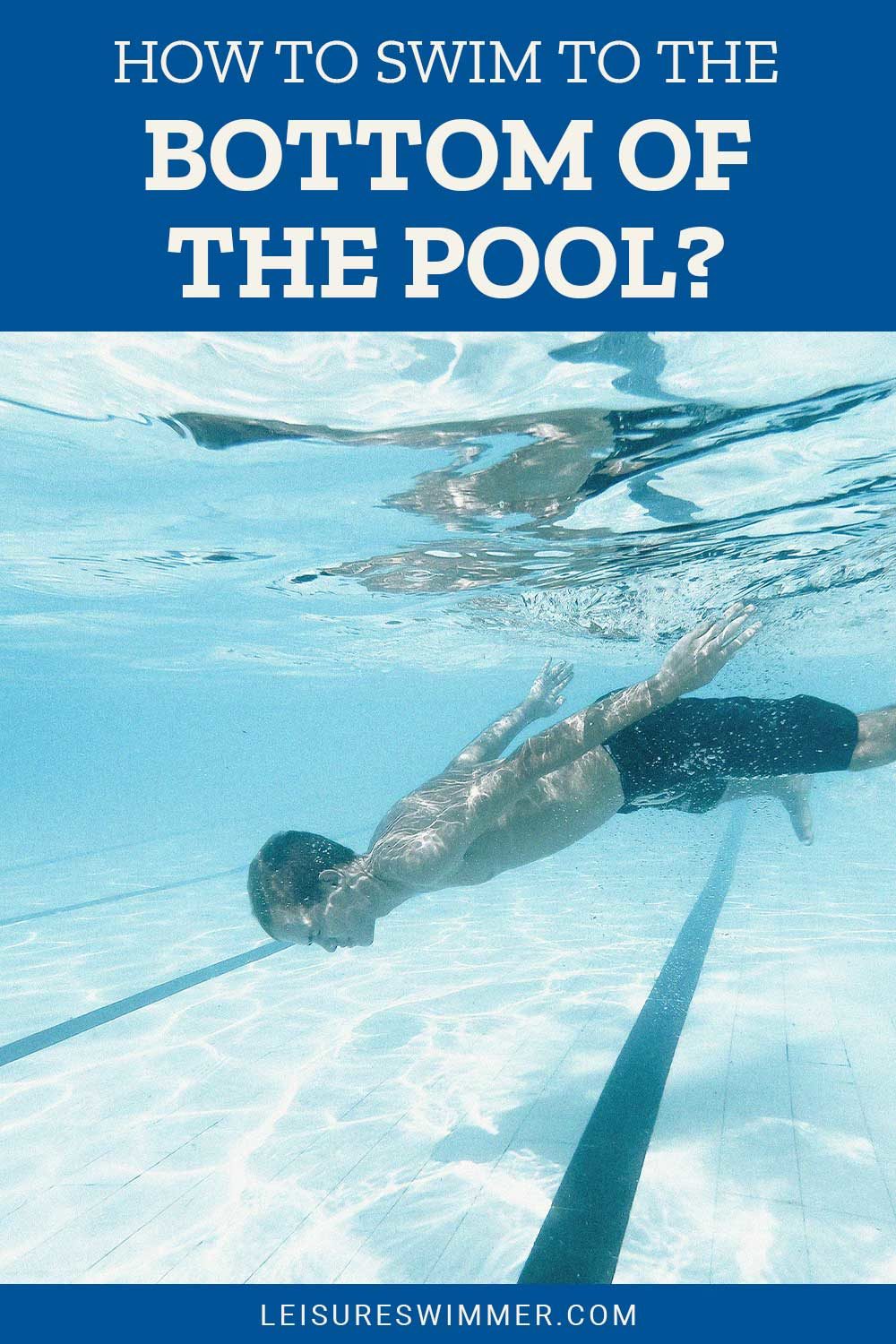How To Swim To The Bottom Of The Pool?
We may earn commissions for purchases made through links on our site. Learn more on our about us page.
Depending on the teacher, this can be accomplished in various ways; the easiest way is to be in the pool, wearing goggles (nose pinch technique is okay), and take a big breath.
After the breath, take the top of your head and plunge it underwater to point towards the bottom of the pool, then pull yourself through the water until your legs can help.
It may take a few tries to get the right technique. Try starting in the shallower ends of the pool first, even using the walls of the pool to “crawl’ down to the bottom of the pool.

How Should You Do It?
There are going to be various opinions on how to effectively teach a person to flip themselves upside down in the pool and swim inverted. It takes coordination, confidence, and a certain level of athleticism to be able to perform this feat, but it’s not impossible.
The first steps might be best done near the pool walls. Using the gradually sloping sides will allow a person to pull themselves by grip until a swimming technique can be learned.
Next, professionals will use diver’s techniques to point their hands above the head and leap in, piercing the water’s surface and using momentum and gravity to swim to the bottom using simple kicking techniques.

Do You Need a Special Skill for It?
There will be some people who will not be able to accomplish this feat for various reasons, but it does not require any sort of coaching or trained skills to complete. After a few tries, even children have been seen playing games with their parents, swimming to the bottom to collect sunken treasures, and returning them to be stored in a chest.
The most important skills needed are controlled breathing, such as holding breath and simple swimming. Reaching the bottom of the deeper pools will take cardiovascular skills, such as the ones learned by Military and Olympians alike.
How to start practicing it?
This should start as soon as a child becomes comfortable in the water; give them a game or scenario which includes searching the “sea floor’ and collecting items off the pool bottom. Be sure to keep an eye on the little ones, especially when learning their own limitations.
Applications for adult recreation include snorkeling, underwater exploration, and rescuing the little one at the bottom of the pool.
Practice should have started in one’s youth for the best chance at becoming adapted to the skill, but otherwise, starting as soon as possible will be the advice of most experts.
How Do You Stop Floating Back to the Surface?
The human body is naturally buoyant, especially when holding a lung full of air. The gasses in the body, especially the lungs, will have enough force to bring the human form to the surface from any water source.
To prevent this is going to be steady kicking and arm movements but evolving to release the carbon dioxide buildup at choice times can help lessen the body’s buoyancy.
Be sure to have a tank of air with you, do not attempt this without others around, or know when to return to the surface for a breath.
How Long Does it Take to Learn it?
The learning period will be different for everyone, for most of the skills can be learned as a child. For example, most children can learn basic swimming techniques if given a chance, and it does not take more than one year to learn.
The fact is that a person can learn from an adolescent age and into adulthood, though as people age, new skills can be harder to master depending on the individual.
There are always those surprise athletes that select a sport late and become naturally excellent at it, even becoming professional athletes at the highest levels.
Final Thoughts on How to Swim to the Bottom of the Pool
This activity is intended for fun at first, giving the kids a game to play at the local pool. But, later in life, this skill can save a life, become a professional, or help a service member serving their country.
Outside of competitive swimming are a plethora of professions that utilize this swimming skill for daily activities, such as exploration charter trips on the seas or being a lifeguard at the community pool.
Just remember to be thankful for the people that have taught this ability down the generations, so much so that we have perfected teaching it.


